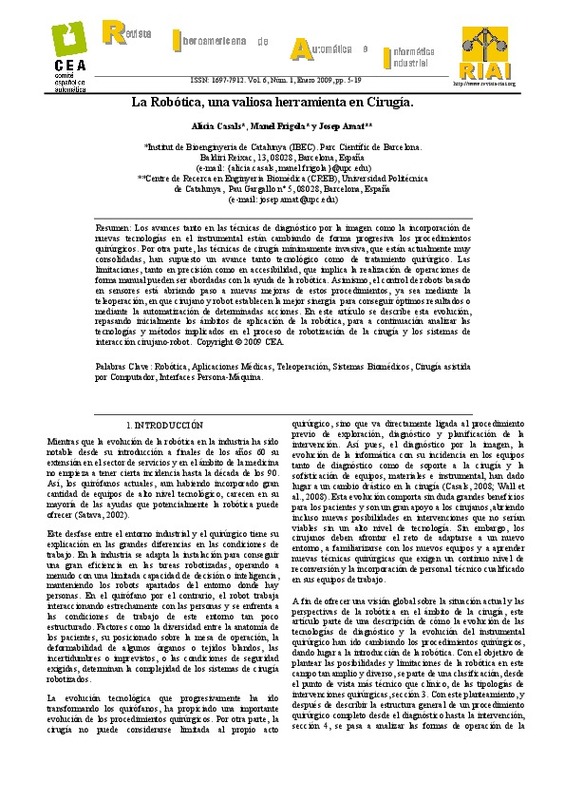|
Resumen:
|
[ES] Los avances tanto en las técnicas de diagnóstico por la imagen como la incorporación de nuevas tecnologías en el instrumental están cambiando de forma progresiva los procedimientos quirúrgicos. Por otra parte, las ...[+]
[ES] Los avances tanto en las técnicas de diagnóstico por la imagen como la incorporación de nuevas tecnologías en el instrumental están cambiando de forma progresiva los procedimientos quirúrgicos. Por otra parte, las técnicas de cirugía mínimamente invasiva, que están actualmente muy consolidadas, han supuesto un avance tanto tecnológico como de tratamiento quirúrgico. Las limitaciones, tanto en precisión como en accesibilidad, que implica la realización de operaciones de forma manual pueden ser abordadas con la ayuda de la robótica. Asimismo, el control de robots basado en sensores está abriendo paso a nuevas mejoras de estos procedimientos, ya sea mediante la teleoperación, en que cirujano y robot establecen la mejor sinergia para conseguir óptimos resultados o mediante la automatización de determinadas acciones. En este artículo se describe esta evolución, repasando inicialmente los ámbitos de aplicación de la robótica, para a continuación analizar las tecnologías y métodos implicados en el proceso de robotización de la cirugía y los sistemas de interacción cirujano-robot.
[-]
[EN] Continuous advances on diagnostic techniques based on medical images, as well as the incorporation of new techniques in surgical instruments are progressively changing the new surgical procedures. Also, new minimally ...[+]
[EN] Continuous advances on diagnostic techniques based on medical images, as well as the incorporation of new techniques in surgical instruments are progressively changing the new surgical procedures. Also, new minimally invasive techniques, which are currently highly consolidated, have produced significant advances, both from the technological and from the surgical treatment perspectives. The limitations that the manual realization of surgical interventions implies, in what refers to precision and accessibility, can be tackled with the help of robotics. In the same way, sensor based robot control techniques are opening new possibilities for the introduction of more improvements in these procedures, either relying on teleoperation, in which the surgeon and the robot establish their best synergy to get the optimal results, or by means of the automation of some specific actions or tasks. In this article the effect of robotics in the evolution of surgical techniques is described. Starting with a review of the robotics application fields, the article continues analyzing the methods and technologies involved in the process of robotizing surgical procedures, as well as the surgeon-robot interaction systems.
[-]
|






